
What Is Demand-Pull Inflation?
A period of inflation that comes from rapid growth in aggregate demand is called demand-pull inflation. Demand-pull inflation occurs when economic growth occurs too rapidly.
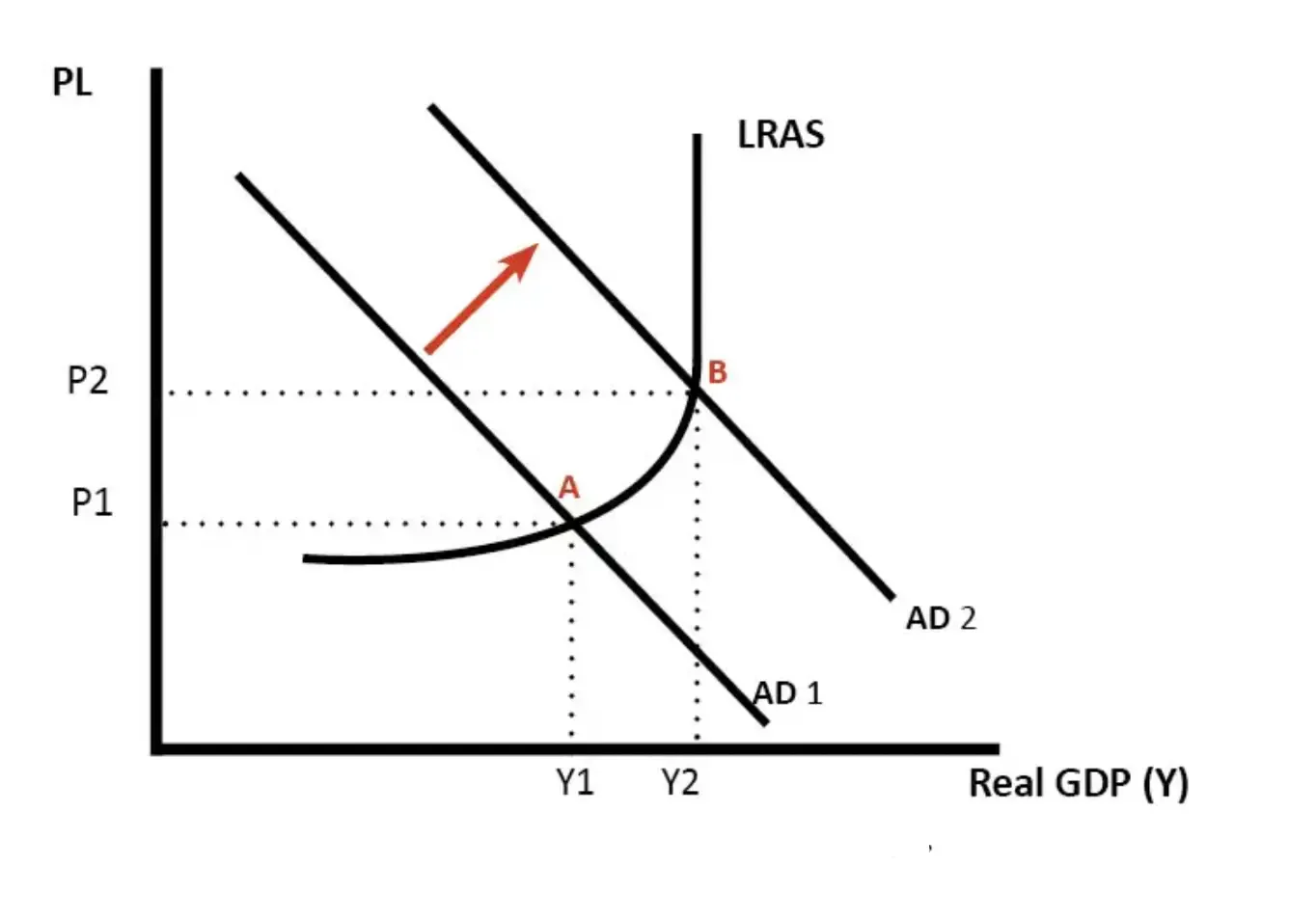
If the productive capacity (LRAS) doesn’t rise as quickly as aggregate demand (AD), then firms will respond by increasing prices, which creates inflation.
Inflation refers to a sustained rise in price levels, while demand-pull inflation is caused by aggregate demand increasing more quickly than productive capacity.
Demand-Pull Inflation: What Does It Mean?
- There is excess demand, with too much money chasing too few goods.
- The economy is at or almost at full capacity or full employment.
- The economy is growing at a rate faster than the long-run trend rate.
- There is a falling unemployment rate.
How Demand-Pull Inflation Occurs
Let’s say aggregate demand is rising at 5%, but productive capacity is only rising at 3%. The firms see that demand is outstripping supply, so they respond by increasing prices.
As firms increase production, they employ more workers. This leads to a rise in employment and a fall in unemployment. With an increased demand for workers, there’s upward pressure on wages, which leads to wage-push inflation. With higher wages comes an increase in the disposable income of workers, followed by a rise in consumer spending.
Economic Growth and Long-Run Trend Rate
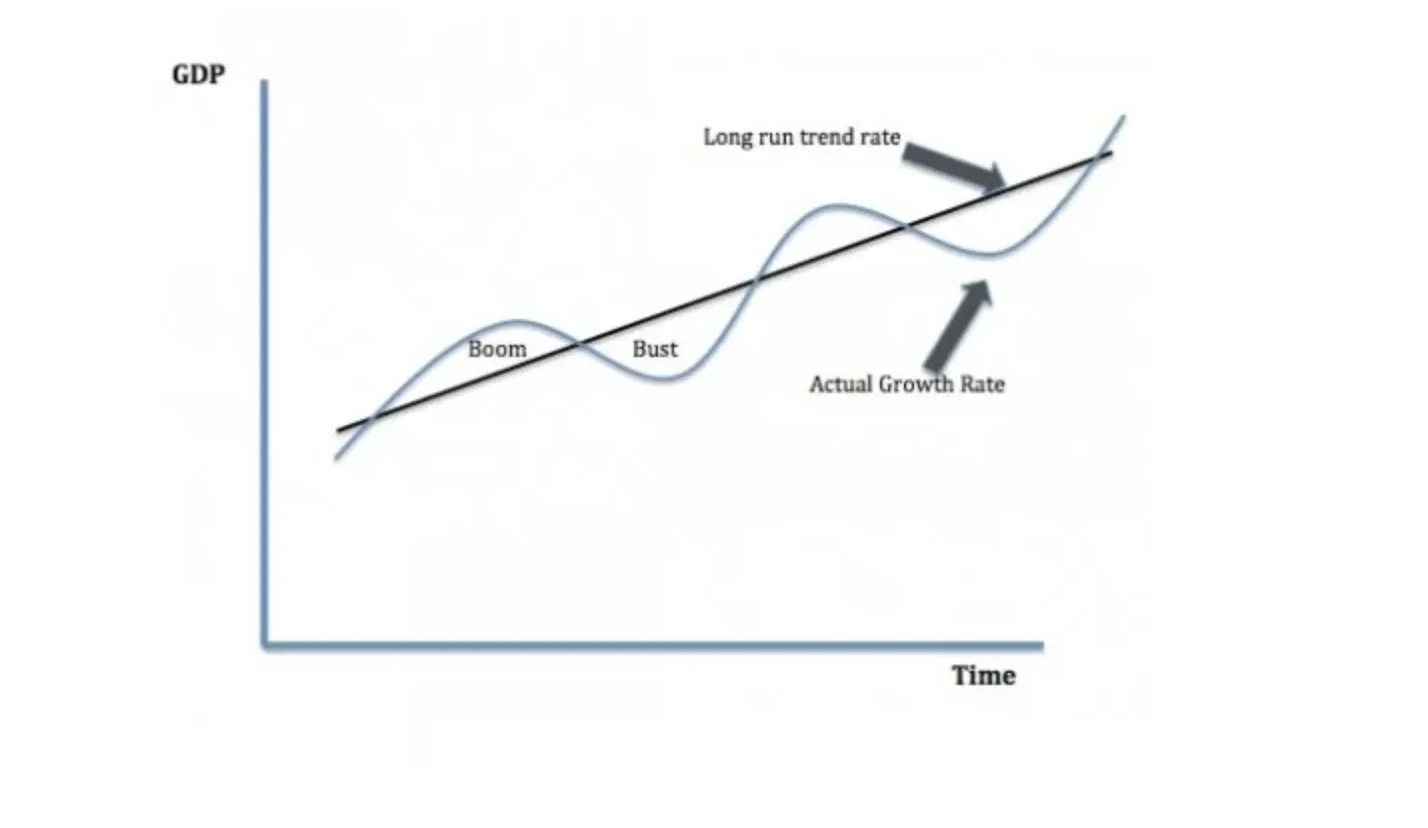
The long-run trend rate of economics is the sustainable rate of economic growth. It refers to the rate of economics without any demand-pull inflation. When economic growth exceeds the long-run trend rate, it causes inflationary pressures. In a boom, growth is higher than the long-run trend rate. This is the type of situation where we get demand-pull inflation.
Causes of Demand-Pull Inflation
- Lower interest rates: With a cut in interest rates comes a rise in higher investment and consumer spending. This boost to demand leads to a rise in AD and inflationary pressures.
- A rise in house prices: A positive wealth effect and boosted consumer spending results from rising house prices. This leads to increased economic growth.
- Rising wages: For instance, unions bargaining for higher wages.
- Devaluation: In the exchange rate, devaluation increases domestic demand since exports are cheaper and imports are more expensive. Devaluation also causes cost-push inflation since imports are more expensive.
Demand-Pull Inflation and the Phillips Curve
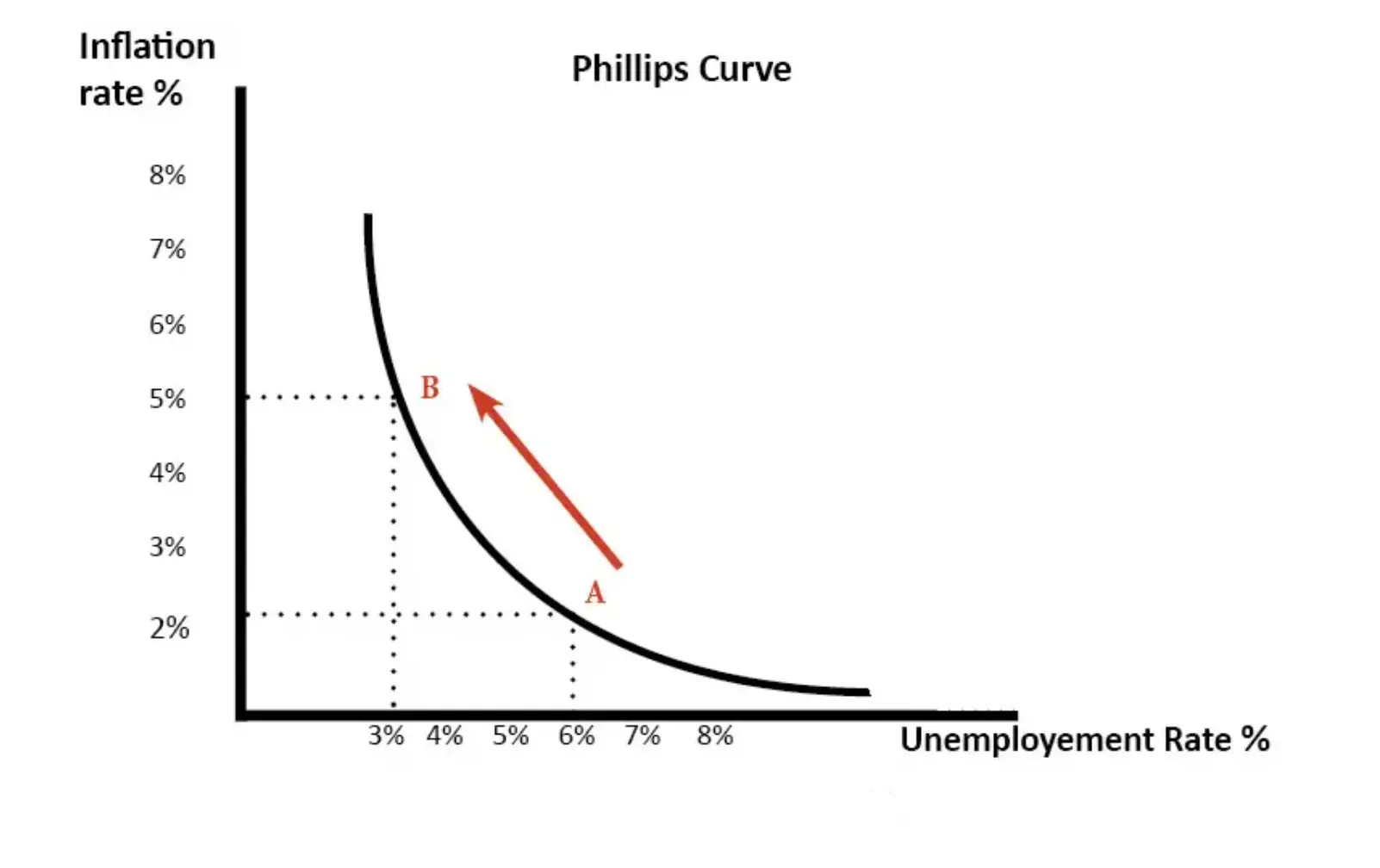
A Phillips Curve can also show demand-pull inflation. As you can see, a rise in demand leads to a fall in unemployment, from 6% to 3%. However, it causes an increase in inflation, from 2% to 5%.
Examples of Demand-Pull Inflation
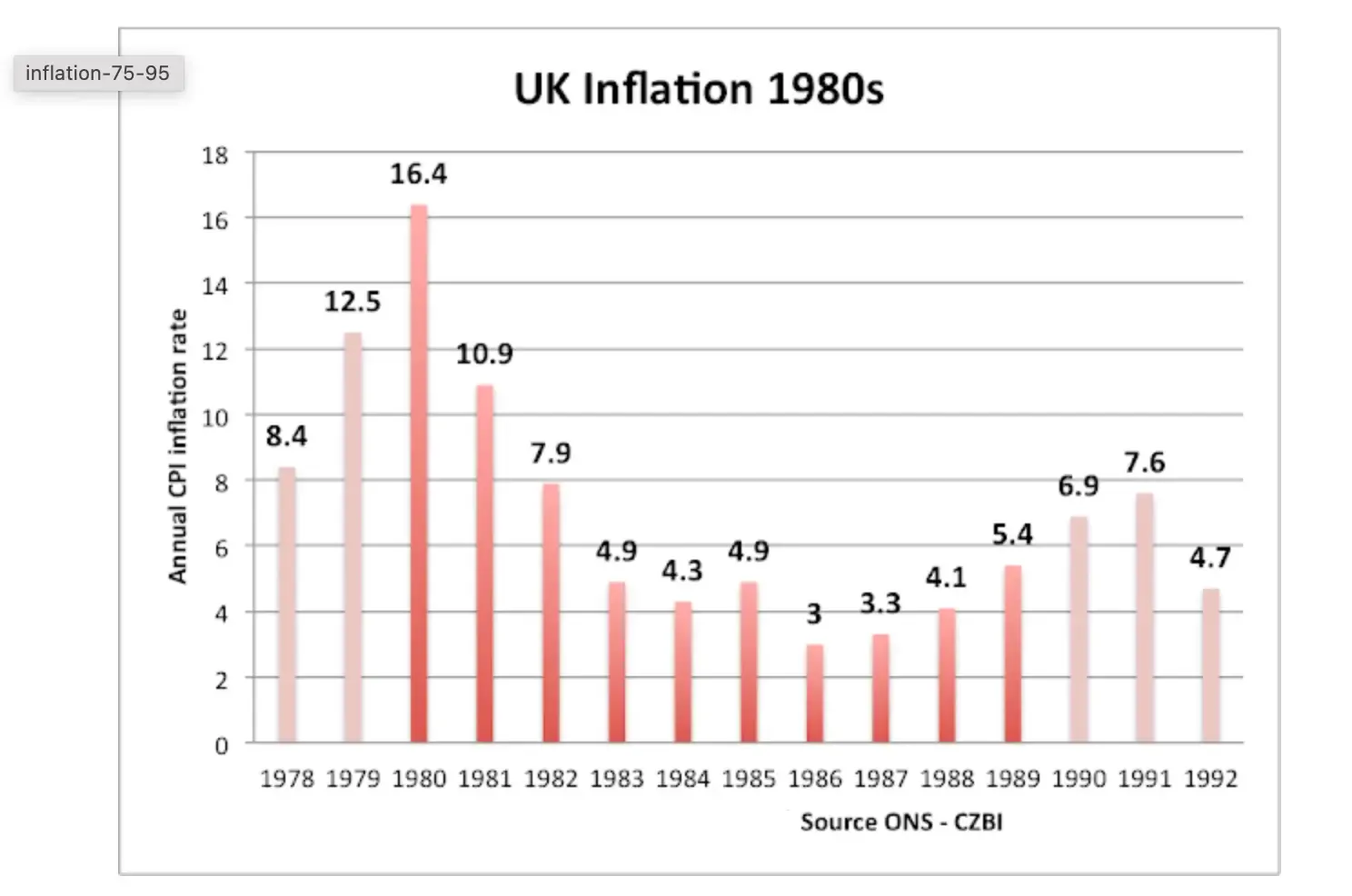
From 1986 to 1991, inflation increased; this is an example of demand-pull inflation. In the late 1970s, inflation was primarily due to cost-push factors such as oil prices and wages.
UK 1980s-91
|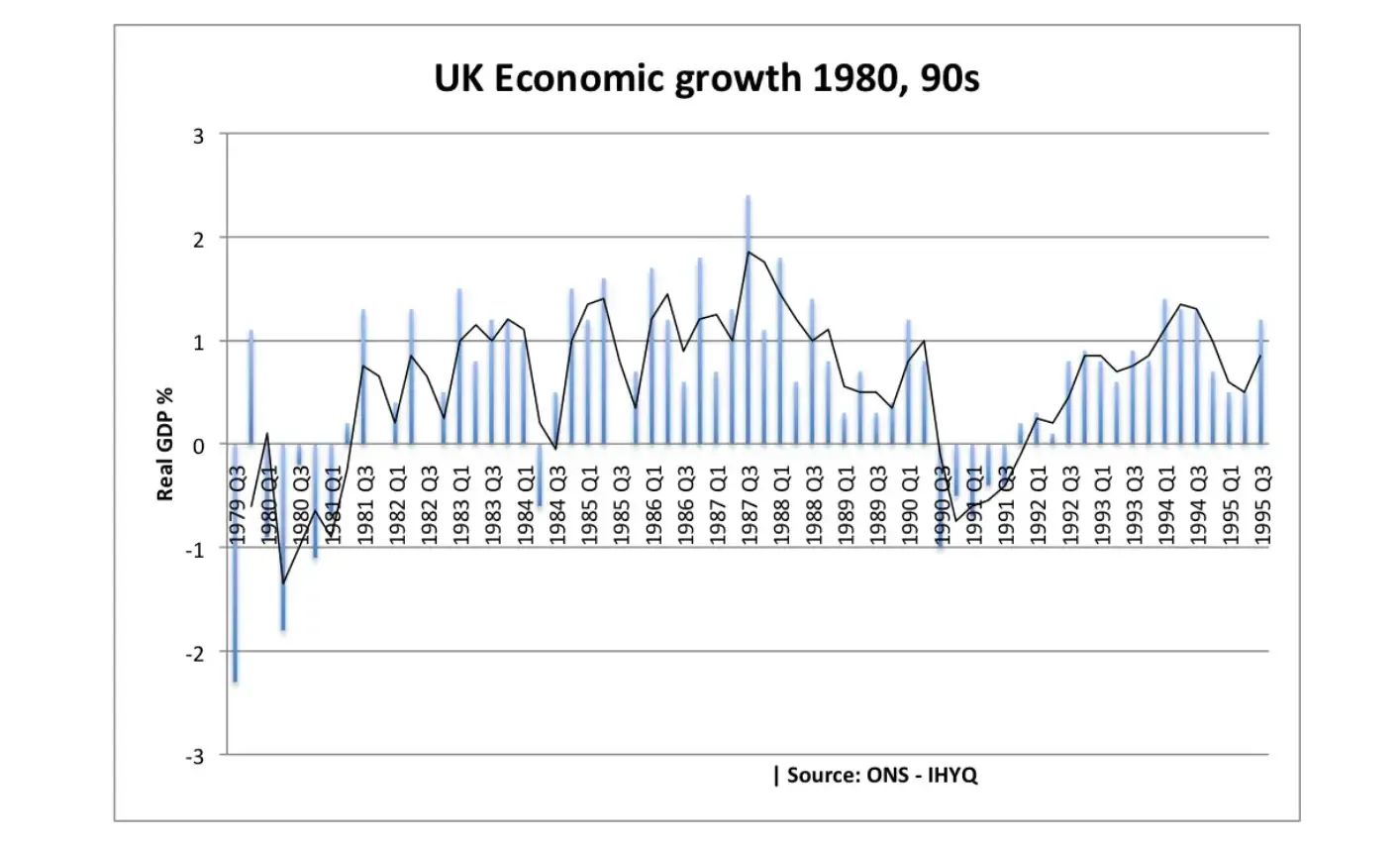
This chart displays the quarterly growth rate in the UK. In the late 1980s, the UK’s rate of economic growth rose to more than 4%. This was due to demand-side factors like rising house prices, a cut in income tax rates and real interest rates, and a rise in consumer confidence. Inflationary pressures increased as a result of the rapid growth in demand.
US Late 1960s
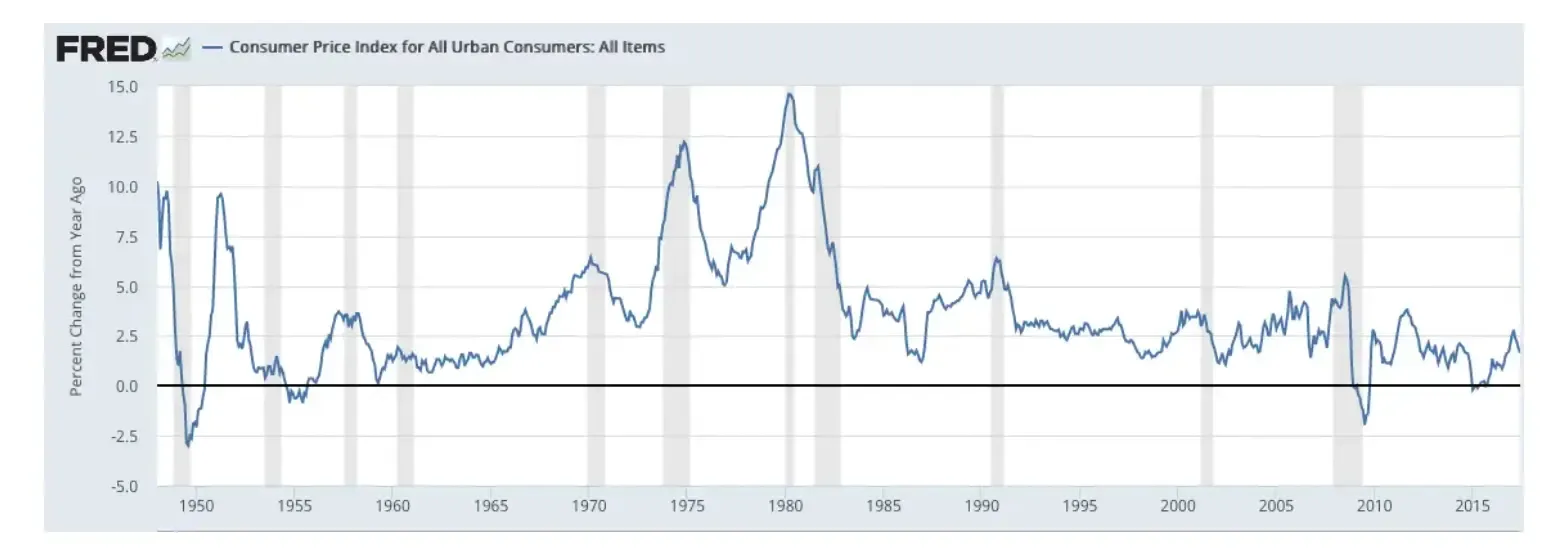
The rapid economic growth of the mid-1960s led to increased inflation, from 2% in 1966 up to 6% in 1970.
Demand-Pull Inflation and Other Types of Inflation
Demand-pull inflation can occur because of:
- Rising costs of production or cost-push inflation. For instance, in the early 1970s, rising oil prices and economic growth caused a spike in US inflation. It rose to 12% by 1974.
- Built-in inflation. Inflation comes with its own momentum. When you have high inflation in previous years, that makes future inflation more likely since firms increase prices in anticipation of the repeated inflation.
The Decline of Demand-Pull Inflation
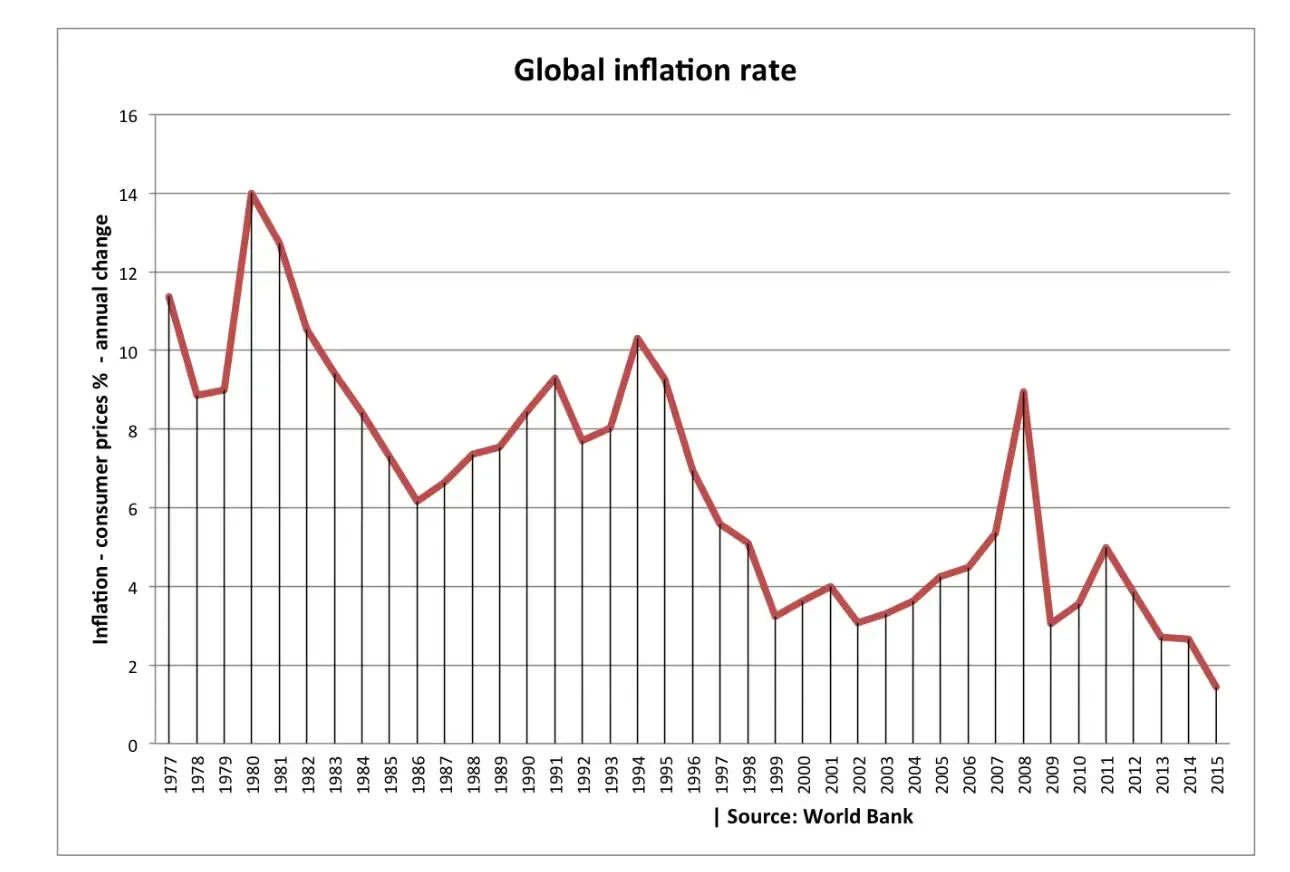
Demand-pull inflation has become very rare in recent years. Small rises in inflation (2008/2001) were mainly results of cost-push factors. In more recent decades, we haven’t witnessed any significant demand-pull inflation because of multiple factors:
- Independent central banks are responsible for monetary policy and keeping inflation at a target of 2%.
- Secular stagnation means lower rates of economic growth.
- Downward pressure on price levels from the global economy means the deflation of manufactured goods in Asia.
- New technology brings lower prices.


